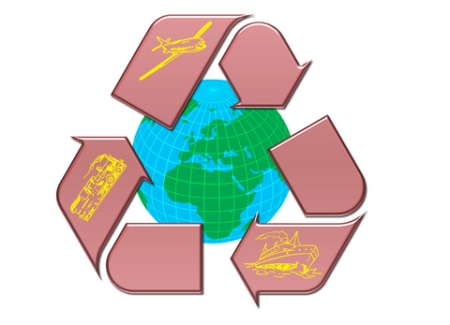MUDGE’S Musings
It has long been an article of faith in the press that U.S. education is failing to deliver adequate numbers of competent engineers and scientists.
We’ve all seen the reports that show U.S. students in all grade levels far behind many other countries in test results.
So, imagine the surprise that MUDGE felt when encountering this column in Business Week, one of his regular reads (for over 30 years!).

Forget the conventional wisdom. U.S. schools are turning out more capable science and engineering grads than the job market can support
by Vivek Wadhwa
Political leaders, tech executives, and academics often claim that the U.S. is falling behind in math and science education. They cite poor test results, declining international rankings, and decreasing enrollment in the hard sciences. They urge us to improve our education system and to graduate more engineers and scientists to keep pace with countries such as India and China.
Yet a new report by the Urban Institute, a nonpartisan think tank, tells a different story. The report disproves many confident pronouncements about the alleged weaknesses and failures of the U.S. education system. This data will certainly be examined by both sides in the debate over highly skilled workers and immigration (BusinessWeek.com, 10/10/07). The argument by Microsoft (MSFT), Google (GOOG), Intel (INTC), and others is that there are not enough tech workers in the U.S.
What we believe is not, as it happens, supported by the facts.
We believe, because we’ve been hearing it for years, nay decades, that test scores are declining, and literacy and especially numeracy and interest in science is declining.
Salzman and Lowell found the reverse was true. Their report shows U.S. student performance has steadily improved over time in math, science, and reading. It also found enrollment in math and science courses is actually up.
And we keep hearing that comparisons of our children’s performance versus those of many other countries are dire.
And the new report again went against the grain when it compared the U.S. to other countries. It found that over the past decade the U.S. has ranked a consistent second place in science. It also was far ahead of other nations in reading and literacy and other academic areas. In fact, the report found that the U.S. is one of only a few nations that has consistently shown improvement over time.
So now comes the rub. We’ve been too successful in our aim to direct our students into technical degree programs.
As far as our workforce is concerned, the new report showed that from 1985 to 2000 about 435,000 U.S. citizens and permanent residents a year graduated with bachelor’s, master’s, and doctoral degrees in science and engineering. Over the same period, there were about 150,000 jobs added annually to the science and engineering workforce.
Where have we gone right? And, about the shortfall we have been hearing about forever, you know, the one about China and India graduating so many more engineers and scientists than the U.S.? How can we not fall behind?
In previous columns, I have written about research my team at Duke University completed that shattered common myths (BusinessWeek.com, 7/10/06) about India and China graduating 12 times as many engineers as the U.S. We found that the U.S. graduated comparable numbers and was far ahead in quality. Our research also showed there were no engineer shortages (BusinessWeek.com, 11/7/06) in the U.S., and companies weren’t going offshore because of any deficiencies in U.S. workers. So, there isn’t a lack of interest in science and engineering in the U.S., or a deficiency in the supply of engineers.
But there is a deficiency in jobs for all of these engineering graduates! And, if you follow the links to earlier Wadhwa columns, you’ll find that there is a great deal of confusion about what exactly is an engineering curriculum in China, and a shortage of jobs there also.
[Please click the link below for the complete article — but then please come on back!]
The Science Education Myth
MUDGE has been a part of the blogging community (and a ruefully mostly derivative member at that) for a short time, and I’ve taken with a grain of salt the disparagement of what many in the blogosphere call MSM, an acronym for mainstream media.
But, so many of my own rock solid assumptions have been skewered in this month of October, 2007 alone, (for example, here and here) that I have to step back and reconsider.
How many other of our close-held assumptions about how the world works have been created, nurtured and propagated despite their inaccuracies? Adolf Hitler boasted about the effectiveness of the “big lie.”
Our White House fed assumption regarding Saddam Hussein’s purported weapons of mass destruction is an example of a big lie from our immediate past.
On a lesser scale of import than our horribly pointless Iraq misadventure, there are our assumptions about diet and health.
Our assumptions regarding the sad state of our education system compared to the rest of the developed world.
Our assumptions about how many more engineers China and India are graduating every year compared to the U.S.
Let’s assume carefully out there!
It’s it for now. Thanks,
–MUDGE
Technorati Tags:
China,
education,
India,
U.S. education failure,
The ‘Sphere,
mainstream media,
engineering,
big lie,
Vivek Wadhwa,
conventional wisdom,
conventional wis-dumb

![lhc76019043_thumb24_thumb2_thumb2_th[3]](https://mudge.essoenn.com/wp-content/uploads/2008/08/lhc76019043-thumb24-thumb2-thumb2-th3-thumb.jpg?w=398&h=102)




 Posted by mudge
Posted by mudge ![theamerican[4]](https://mudge.essoenn.com/wp-content/uploads/2008/05/theamerican4.jpg?w=396&h=92)




























